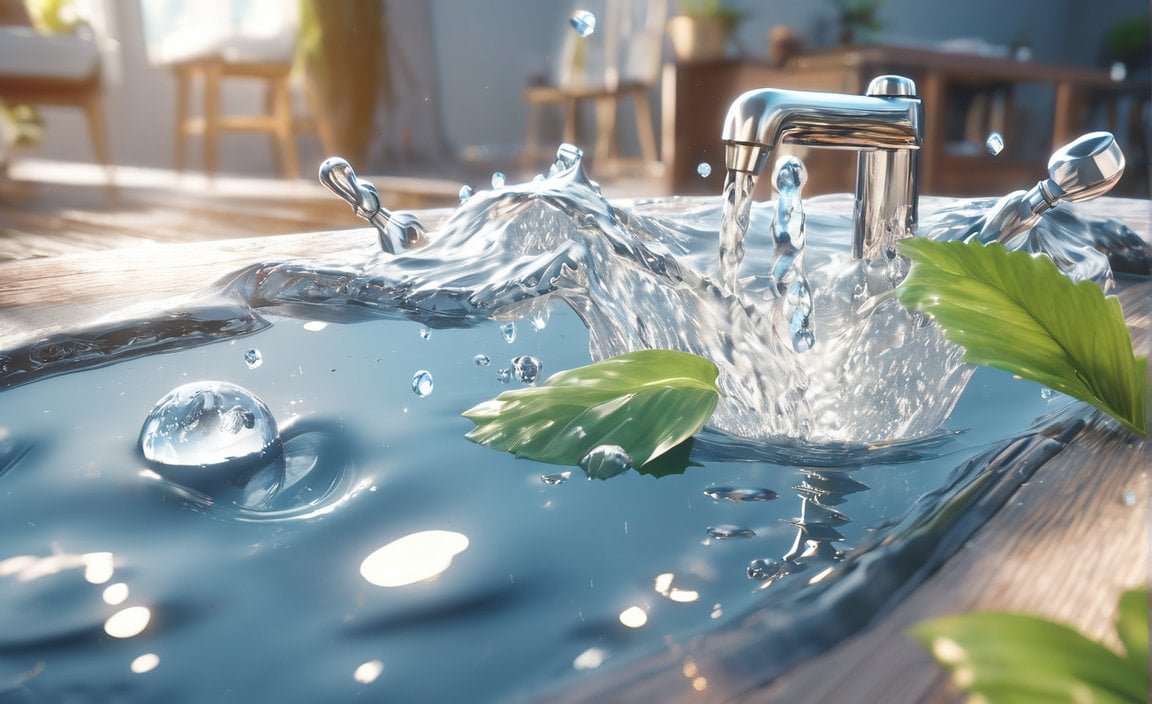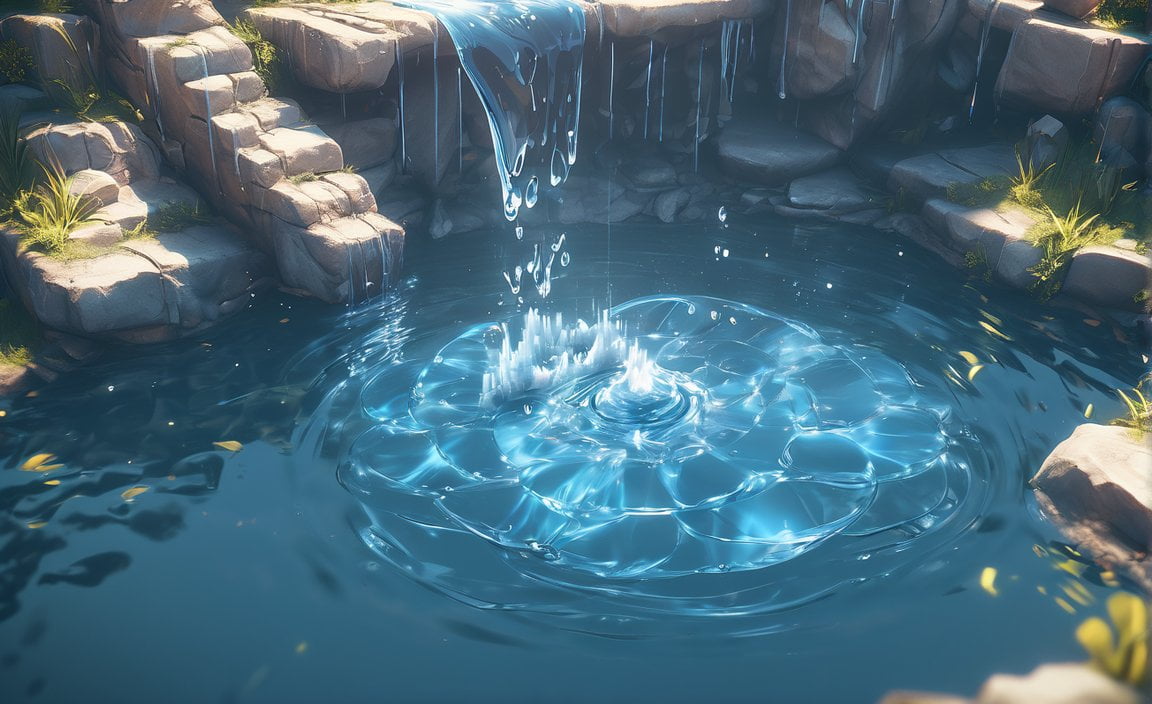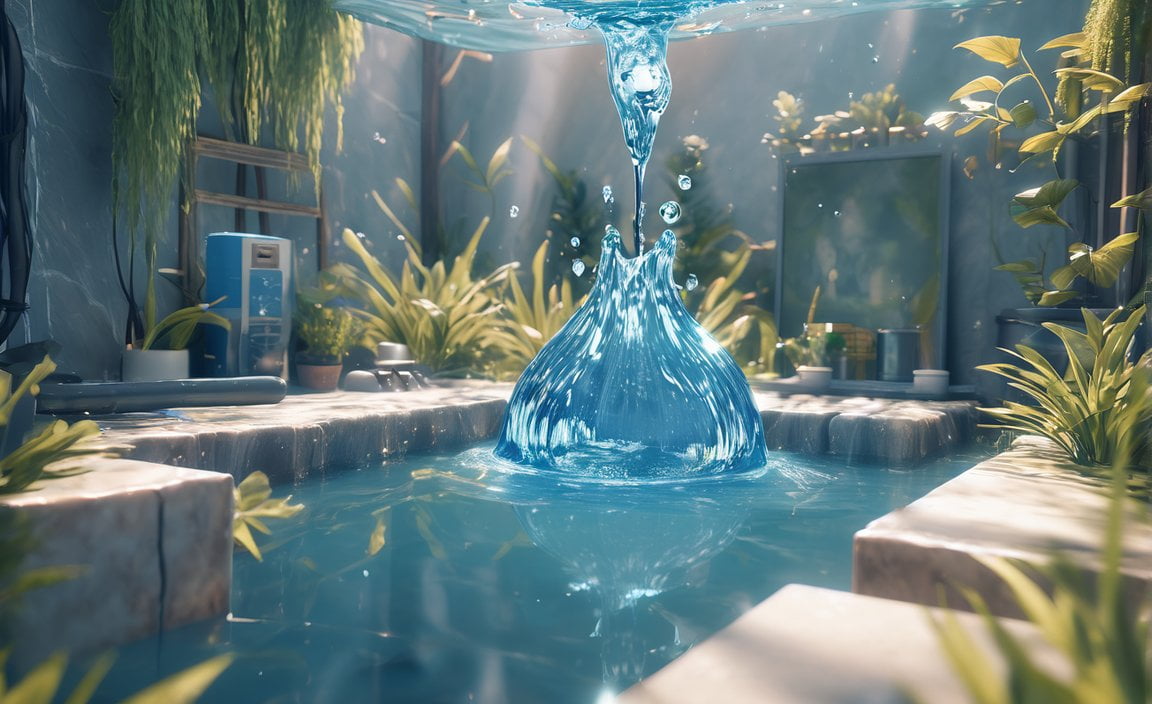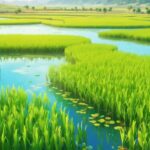Are you looking for simple and practical ways to save water in your everyday life? Look no further! In this article, we will explore 5 easy and effective methods to help you conserve water without compromising your daily routines. With a focus on sustainable living, these practical tips will not only help you reduce your water usage but also contribute to a greener and more eco-friendly lifestyle. So let’s dive in and discover how you can make a big difference with just a few small changes.
Key Takeaways:
- Check for leaks: Fix any leaks in faucets and toilets to prevent water waste.
- Turn off the faucet when not in use: Avoid leaving the water running unnecessarily, such as during activities like brushing or shaving.
- Take shorter showers and use a low-flow showerhead: Limiting shower time and using a low-flow showerhead can help conserve water without sacrificing comfort.
- Run the dishwasher and washing machine only when full and use cold water: Utilize full loads and opt for cold water to minimize water usage when operating these appliances.
- Collect rainwater and reuse it for gardening or washing: Harvest rainwater to reduce reliance on fresh water for tasks like gardening or cleaning. By implementing these 5 water-saving practices, individuals can contribute to water conservation efforts and help protect this valuable natural resource.
5 Easy Ways to Save Water

Check for Leaks
Leaky faucets and toilets are some of the main culprits behind water waste in households. Even a small leak can waste a significant amount of water over time. It is crucial to fix these leaks as soon as possible to conserve water. Regularly inspect your faucets and toilets for any signs of leakage. If you notice a leak, don’t postpone the repair. Taking immediate action can go a long way in saving water and reducing your water bill.
Turn off the Faucet when Not in Use
We often leave the water running unnecessarily while performing everyday tasks like brushing our teeth or shaving. By making a simple habit of turning off the faucet when not in use, we can save a significant amount of water. Every drop counts, and by being conscious of our water usage, we can make a positive impact on conserving this precious resource.
Take Shorter Showers and Use a Low-Flow Showerhead
The average shower can use a substantial amount of water, especially if we indulge in long shower sessions. By limiting our shower time and using a low-flow showerhead, we can conserve water without sacrificing our comfort. Shortening our showers not only helps save water but also reduces energy consumption since less water needs to be heated. It’s a win-win situation for both our wallets and the environment.
Run your Dishwasher and Washing Machine Only When They are Full and Use Cold Water
Utilizing your dishwasher and washing machine efficiently can also contribute to water conservation. Wait until you have a full load before running these appliances. Running them with only a few items wastes water and energy. Additionally, opt for cold water when operating these appliances whenever possible. The majority of the energy consumed by these machines is used to heat the water, so using cold water not only saves water but also reduces energy consumption.
Collect Rainwater and Reuse it
Nature provides us with a free source of water that we often overlook: rainwater. By collecting rainwater, we can reduce our reliance on fresh water for tasks like gardening or cleaning. Invest in a rain barrel or other rainwater harvesting systems to capture and store rainwater. This collected water can then be used for various purposes, such as watering plants, washing vehicles, or even flushing toilets. By utilizing rainwater, we can save a significant amount of potable water that would otherwise be wasted.
By implementing these 5 easy water-saving practices, you can play a part in conserving water and protecting this valuable natural resource. Remember, every drop saved counts, and together we can make a significant difference in sustainable living. So why wait? Start incorporating these practices into your daily routine and become a water-saving superhero!
Did you know that there are 3 reasons why we should not waste water? Find out more about it here.
Looking for ways to keep water clean? Discover the top 3 methods here.
3. Fix Leaks and Drips Promptly
Leaky faucets and drippy pipes may seem like minor annoyances, but they can actually waste a significant amount of water over time. By addressing these issues promptly, you can not only conserve water but also save money on your utility bills. Here’s how you can fix leaks and drips promptly:
Detect the Leaks: Start by identifying any leaks in your household. Pay attention to any unusual sounds or noticeable dampness around faucets, toilets, or pipes. Sometimes, leaks may be hidden and difficult to spot, so keep an eye out for any increase in your water bill or water meter readings.
Inspect Faucets and Fixtures: Check all faucets, showerheads, and plumbing fixtures for leaks. Even a minor drip can waste a surprising amount of water. Tighten loose connections and replace worn-out washers or seals. If necessary, consider hiring a professional plumber to assist you in fixing more complex leakages.
Repair Toilet Leaks: Toilets are notorious for hidden leaks. To check for leaks, place a few drops of food coloring in the toilet tank. If the color appears in the toilet bowl after 15 minutes, you have a leak. Common causes include faulty flappers or faulty fill valves. Replace these components as needed.
Address Pipe Leaks: Leaky pipes can be more challenging to fix, but they should not be ignored. Insulate exposed pipes to reduce the risk of freezing and subsequent leaks. If you discover a leak, consider using pipe repair tape or plumbing epoxy as a temporary solution until a professional can assess and repair the issue.
Upgrade to Efficient Fixtures: Consider replacing old, inefficient plumbing fixtures with water-saving alternatives. Look for faucets, showerheads, and toilets that are labeled as WaterSense certified. These fixtures are designed to use less water without compromising performance.
By promptly addressing leaks and drips, you can significantly reduce water waste in your home. Not only will you contribute to water conservation efforts, but you’ll also protect this precious resource for future generations.
Key Takeaways:
– Leaks and drips should be promptly fixed to conserve water and save money.
– Detect leaks by watching for water meter increases or unusual sounds and dampness around faucets, toilets, or pipes.
– Inspect faucets and fixtures, tighten connections, and replace worn-out washers or seals.
– Use food coloring to detect toilet leaks and replace faulty flappers or fill valves.
– Address pipe leaks by insulating exposed pipes and using temporary solutions like tape or epoxy until professional assistance is available.
– Consider upgrading to water-saving fixtures labeled as WaterSense certified.
Sources:
[^2^]: GD Water Consult: Drips to Drops: Creative Ways to Save Water at Home and Office
4. Water Plants Wisely and Use Rainwater Harvesting Techniques.

In our efforts to save water and live sustainably, we often overlook simple practices that can make a big difference. One such practice is watering our plants wisely and utilizing rainwater harvesting techniques. By adopting these methods, we can conserve water resources and contribute to a greener future.
Water Plants with Care and Use Rainwater Harvesting Techniques
When it comes to watering our plants, there are a few key strategies we can follow. By doing so, we can reduce water waste and ensure that our plants thrive. Additionally, utilizing rainwater harvesting techniques can help us make the most of this valuable resource.
1. Water Plants According to Their Needs: Different plants have different watering requirements. By understanding the water needs of each plant in your garden, you can avoid over-watering or under-watering. This not only saves water but also promotes healthier plant growth.
2. Use a Drip Irrigation System: Drip irrigation is an efficient way to water your plants. This system delivers water directly to the roots, minimizing evaporation and ensuring that water is used effectively. It also reduces weed growth and prevents water runoff.
3. Mulch to Retain Moisture: Applying a layer of organic mulch around your plants helps retain moisture in the soil. Mulch reduces evaporation, regulates soil temperature, and suppresses weeds. By using mulch, you can water your plants less frequently while maintaining healthy soil conditions.
4. Collect and Use Rainwater: Rainwater is a free and abundant resource that can be used for various purposes. By collecting and storing rainwater, you can reduce your reliance on potable water sources. Rainwater can be used for watering plants, washing outdoor surfaces, or even flushing toilets.
5. Install a Rain Barrel or Cistern: Setting up a rain barrel or cistern is an easy and cost-effective way to collect rainwater. These containers can be placed under downspouts or gutter systems to capture rainwater. By installing a rain barrel or cistern, you can collect rainwater directly and use it whenever needed.
Utilizing rainwater harvesting techniques not only conserves water but also reduces soil erosion and helps prevent floods. It is particularly crucial in areas where mains water is limited or during periods of drought. Rainwater harvesting is a sustainable and cost-effective method of water conservation that benefits both individuals and the environment.
Key Takeaways:
- Water plants according to their specific needs to avoid over or under-watering.
- Use a drip irrigation system to minimize water waste and ensure efficient water delivery.
- Apply organic mulch around plants to retain soil moisture, regulate temperature, and suppress weeds.
- Collect and use rainwater for various purposes, such as watering plants, washing outdoor surfaces, and flushing toilets.
- Install a rain barrel or cistern to capture rainwater and reduce reliance on potable water sources.
Sources:
– Conserve Energy Future: Rainwater Harvesting: Advantages, Disadvantages, Uses, and Techniques
– Treehugger: Rainwater Harvesting: A Beginner’s Guide
5 Easy Ways to Save Water: Practical Tips for Sustainable Living
Water conservation is crucial for maintaining a sustainable future. By incorporating small acts into our daily routines, we can save a significant amount of water. Here are some easy and practical tips to help you be mindful of outdoor water usage and opt for water-saving landscaping:
Adjust Your Sprinklers and Watering Schedule:
- Make sure your sprinklers are watering your lawn and garden, not pavement or sidewalks. This will prevent unnecessary water wastage.
- Water your plants early in the morning or late in the evening to minimize evaporation and ensure optimal absorption.
- Set a watering schedule and be mindful of the duration and frequency of watering. This allows your plants to get the necessary moisture without wasting water.
Inspect and Maintain Your Irrigation System:
- Regularly inspect your irrigation system for leaks, broken lines, or blockages. Repairing these issues promptly can prevent water loss.
- When watering established lawns, aim for about 1 inch of water per week. This is enough to keep them healthy without excessive water usage.
Consider Water-Saving Alternatives:
- Instead of using a hose to wash your car, opt for a pail of soapy water. This reduces water consumption and prevents unnecessary runoff.
- Use a broom, rather than a hose, to clean driveways and sidewalks. This simple change can save a significant amount of water.
- Cover your swimming pool when not in use to reduce evaporation and minimize water loss.
Optimize Water Usage in Your Outdoor Areas:
- Check for leaks in pipes, hoses, faucets, and couplings. Fix any leaks promptly to prevent water wastage.
- Reuse wastewater whenever possible. For example, collect rainwater in a water butt and use it for gardening.
- Leave lawn clippings on the grass after mowing to retain moisture and reduce the need for additional watering.
- Mulch borders with a layer of mulch to conserve water and prevent weed growth.
Consider the Size and Needs of Your Outdoor Spaces:
- When planning your outdoor spaces, consider the water requirements of different plants and choose water-efficient landscaping options.
- Cultivate and nourish your soil to improve water retention and reduce the amount of water needed for irrigation.
These easy and practical tips can make a big difference in conserving water resources. By being mindful of outdoor water usage and opting for water-saving landscaping practices, you can contribute to a more sustainable future.
Key Takeaways:
– Adjust sprinklers and watering schedules to avoid wasting water.
– Regularly inspect and maintain your irrigation system to prevent leaks.
– Opt for water-saving alternatives like using a pail of soapy water to wash your car or a broom to clean driveways.
– Cover swimming pools when not in use to minimize evaporation.
– Check for leaks and reuse wastewater whenever possible.
– Leave lawn clippings on the grass and mulch borders to conserve water.
– Consider the size and needs of your outdoor spaces when planning water usage.
Sources:
[^1^]: Regional Water – 10 Tips for Outdoor Water Conservation
[^2^]: Eartheasy – 45 ways to conserve water
[^3^]: Gardening Etc – Garden water saving tips
[^4^]: YourHome – Outdoor water use
FAQ
Q1: How can I use pet water to save water for my houseplants?
A1: Instead of dumping old water from your pet’s bowl down the drain, you can give it to your houseplants. Refreshing your pet’s water bowl at least twice a day can provide a significant amount of water for your plants. Source: Treehugger
Q2: How can I reduce water consumption while cooking pasta?
A2: One way to reduce water consumption while cooking pasta is to consider using the one-pot pasta cooking method. This method involves cooking the pasta directly in its sauce, which not only saves time and energy but also reduces water usage. Source: Treehugger
Q3: What can I do to reduce water usage when flushing the toilet?
A3: One simple way to reduce the amount of water used for flushing the toilet is to follow the “if it’s yellow, let it mellow” maxim. By only flushing when necessary, you can significantly save water. Source: Treehugger
Q4: How can I save water by fixing leaks?
A4: Even a small leak can waste hundreds of gallons of water. By regularly checking for and promptly repairing leaks in faucets, pipes, and toilets, you can prevent water wastage and contribute to water conservation. Source: GD Water Consult
Q5: How does reducing meat consumption contribute to water conservation?
A5: Animal agriculture is water-intensive, and reducing meat consumption can have a positive impact on water conservation. By cutting down on meat consumption, individuals can significantly reduce their water footprint and contribute to conserving water resources. Source: Treehugger
- Sept 31 Myth: Unveiling Calendar Secrets - March 18, 2025
- How Long & Till December 18, 2025: Accurate Countdown Guide - March 18, 2025
- Discover Japanese Artists: A Complete History - March 18, 2025
















